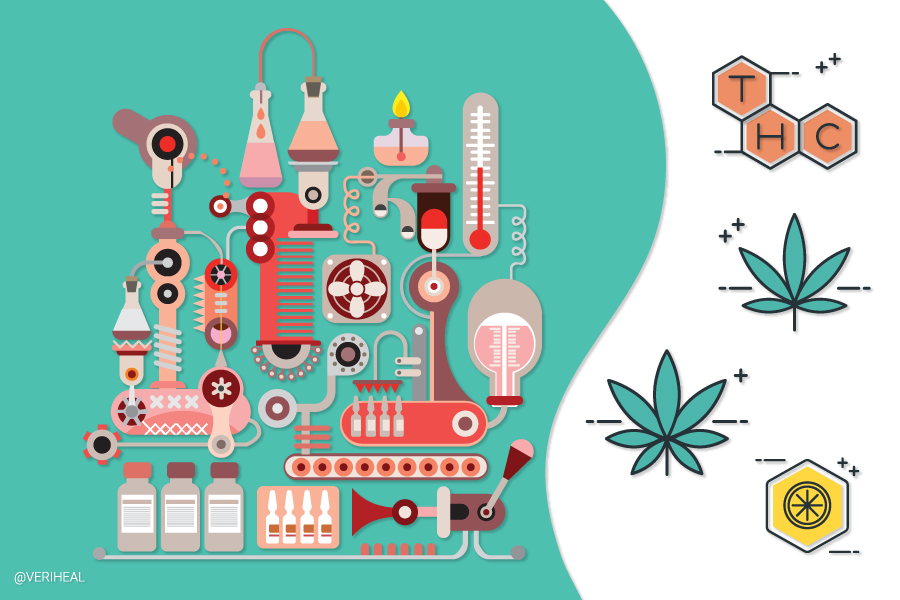It has become quite common for cannabis companies to send their products off to third-party testing facilities in order to assure the quality of and quantity of cannabinoids in their products. By involving third-party facilities, the products are analyzed and tested through the eyes of objectivity as opposed to the cannabis company’s subjectivity over their own products. While this is all good for consumers, having access to the scientific testing document (the COA) can be difficult to read since most consumers are non-scientists.
As the world starts to consume more and more cannabis as a collective, it becomes more important for science to be presented in an understandable manner for the consumers. In this case, it means that consumers need to know how third-party testing is conducted, how to get important information out of the Certificate of Analysis (the COA) as well as how to understand what is important in that scientific document.
What Is Third-Party Testing?
Simply put, this is a test done by a testing/research facility that is both separate, independent, and has no financial interest in the results of the testing. The results need to be accurate and reliable when it comes to the product in question. These third-party tests deliver Certificates of Analysis which covers purity, potency, pesticides, and more.
Consumers should be aware that there are in fact reports of fraud and misrepresented Certificates of Analysis in the market. This stems from lack of standardized regulation and dishonest manufacturers who want to sell inflated THC percentages and hide certain contaminant data, thereby corrupting some testing labs.
What Is a Certificate of Analysis?
For the most part, cannabis companies have no issue getting their products tested by third-party facilities and pride themselves on the commitment to transparency of results. The cannabis industry is still trying to establish proper regulation over products, which is what makes the COA important. The Certificate of Analysis offers up a report of the results from a series of testing by a laboratory.
By having a scientific document such as this, it provides customers with certainty of contents and can be used to ensure that the product is safe. For companies, it can also help keep their products consistent, which helps to build up a rapport with consumers. Therefore, in the midst of missing regulation, the COA is quite important for consumers and not just the companies of the products.
What Can Be Found on a COA and Why Is It Important?
The following are the main categories covered on a COA:
- Cannabinoids: The COA will display how much of each known cannabinoid is in the product. These cannabinoids include cannabidiol (CBD), tetrahydrocannabinol (THC), cannabigerol (CBG), etc. Even though research is still trying to figure out a large portion of the cannabinoids, it is important to know how much of what the product contains, especially if there are supposed to be restrictions in some, like having little to no THC.
- Terpenes: The terpenes found in the plant will also be stated in the COA. This substance exists to protect the plant from pests while being one of the keys to cannabis potency at the same time. Terpenes consist of carbon and hydrogen while terpenoids consist of oxygen and other elements. Both of which are responsible for the smell, color, and potency of the place. Examples of these are called myrcene, pinene, and linalool. Many other plants have these too. If you notice that your plant reminds you of lavender, it’s probably because it contains linalool, which is a terpene found in lavender too.
- Pesticides and Herbicides: This part of the COA will assess whether the plant was properly processed. Meaning that it would assess whether the plant is free of any chemicals that were used to grow it, as it should be. The aim is to determine that the product is ‘clean’ since there is no guarantee that the plant was grown organically.
- Heavy Metals: The COA displays test results on what heavy metals are present in the product… just in case some toxins are present. Possible results include mercury, cadmium, iron, aluminum, copper, and even arsenic. Don’t get nervous, this is more of a precautionary measure. Consumer products should contain no heavy metals.
- Residual Solvents: One of the processes involved in the journey of cannabis to products can include something like harvesting and extracting certain cannabinoids such as CBD. Extraction for concentrates and oil is often done using ethanol or CO2. Except for CO2, this means that there can be harsh and dangerous solvents left behind, particularly with hydrocarbon gasses like propane and hexane. Which is why it is important to make sure there are none remaining.
- Microbials: In the COA, these can include bacteria, viruses, and fungi. The third-party facility is looking for any live bacteria, fungi, or viruses that may be in the product. Examples of these include E. coli, salmonella, aspergillus, and yeast. This is important for making sure that no microbial contamination is in the product.
- Mycotoxins: These are produced by fungi and molds which include aflatoxin, ochratoxin, and ergot alkaloids. Just like the microbial results, the mycotoxin results in the COA are done to ensure that there are no toxins in the product.
- LOD or LOQ: The LOD is the lowest amount of a specific substance that can be determined. The LOQ is the smallest concentration of a specific substance that can be determined. As you can see, there is only a slight difference between the two.
When looking at them, the amount will be displayed using a quantity determinant such as milligrams (mg). It should also be known that the specific substance is often called an “analyte”. The results on this are somewhat based on the type of test used to detect the analyte. The LOQ can sometimes be represented as a plus or a minus as the substance can be there but the actual amount or concentration thereof has not been determined. I know, it’s confusing…just bear with me.
The LOD and LOQ are used as equivalent terms and serve as an indication of how well the third-party facility can detect a specific substance. So, as a consumer, this does not tell us much about the plant, but rather about how good the testing was. This breakdown is intended to make a COA easy to understand, but there are valuables and symbols used by the scientists, which can throw off any person that isn’t scientifically inclined. For consumers, it is important to know that the product contains the stipulated amounts of cannabinoids and that the products are free from any toxins and harmful substances.
Consumers should ask themselves: (1) is the product providing the number of cannabinoids they claim to, (2) do they test for toxins, metals and solvents, and (3) do they state what substances (such as terpenes) were found in the cannabis.
Author, Share & Comments
















